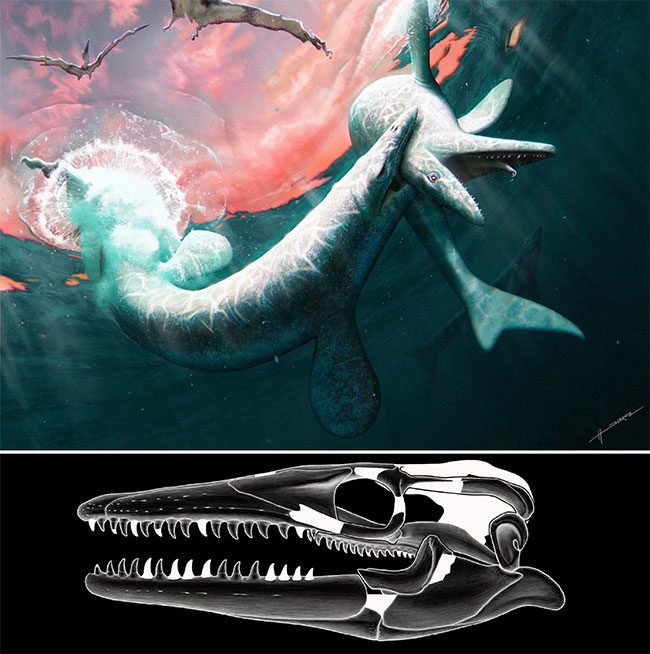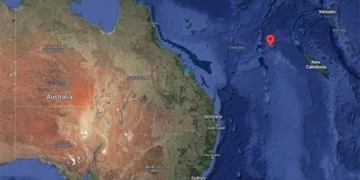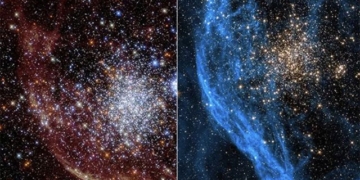A Ferocious Sea Monster Lived 80 Million Years Ago Discovered by Paleontologists.
Jormungandrwalhallaensis is a species of mosasaur, a large group of extinct reptiles that dominated the oceans from approximately 82 to 66 million years ago.
Based on the shape and size of the fossil remains, researchers estimate it was about 7 meters (24 feet) long from snout to tail, comparable to the size of a male sperm whale. This species is characterized by “angry eyebrows” with a bony ridge on the skull along with a relatively short tail.

This species may be an ancestor of the great Mosasaurus.
Amelia Zietlow, the lead author of the study and a Ph.D. student in comparative biology at the Richard Gilder Graduate School of the American Museum of Natural History.
The specimen was first discovered in 2015 in North Dakota, including a skull, jaw, cervical vertebrae, and several nearly complete vertebrae.
A new study of the fossils reveals that this is a particularly interesting example because it is a combination of features seen in two other well-known mosasaur species: Clidastes, a smaller and more primitive form, and Mosasaurus, a giant member of this group that could reach lengths of over 15 meters (50 feet).
J. walhallaensis swam through the oceans about 80 million years ago during the late Cretaceous period. At this time, sea levels were high and much of Africa was flooded, bringing nutrient-rich bottom waters to the surface, creating a thriving marine ecosystem and perfect conditions to become a top predator of the sea. Mosasaurs flourished during this period until they were wiped out approximately 66 million years ago in the same mass extinction event that eradicated the dinosaurs.
Zietlow stated: “As these animals evolved into gigantic sea monsters, they continuously underwent changes. This work brings us one step closer to understanding how all these different forms are related to each other.”
The age of the specimen and its anatomy suggest that this species is likely an ancestor of the great Mosasaurus. However, the history of mosasaurs is still somewhat unclear, so researchers hope that J. walhallaensis may help clarify some questions.
Co-author Clint Boyd from the North Dakota Geological Survey added: “The geological age of fossils in the United States is something we don’t fully understand. The more information we have about geographical and temporal milestones, the better we can understand these creatures.”
The study was published in the Bulletin of the American Museum of Natural History.


















































